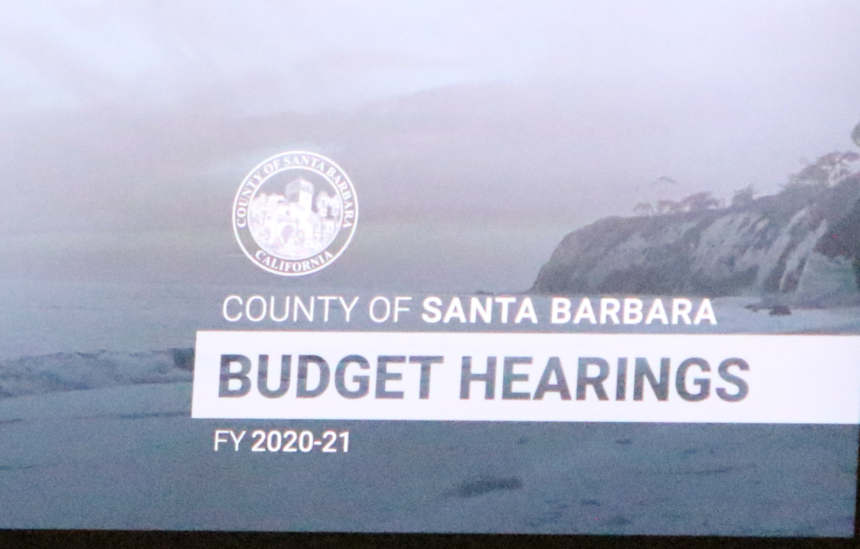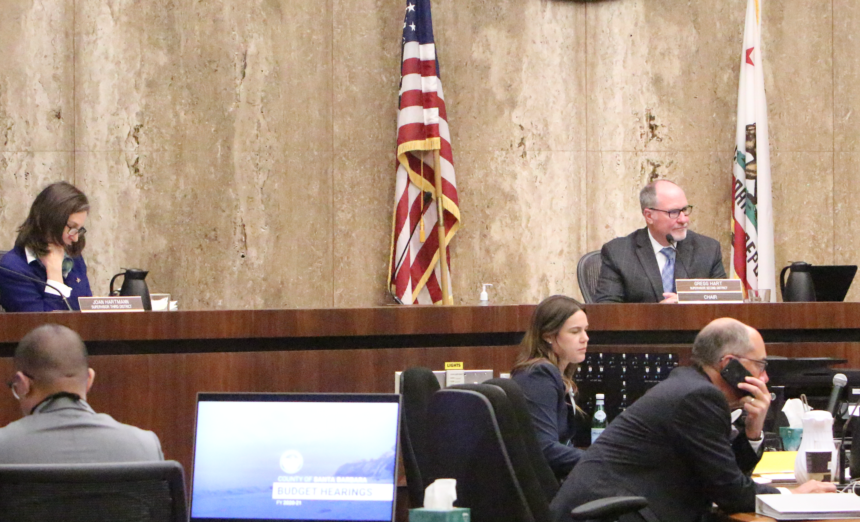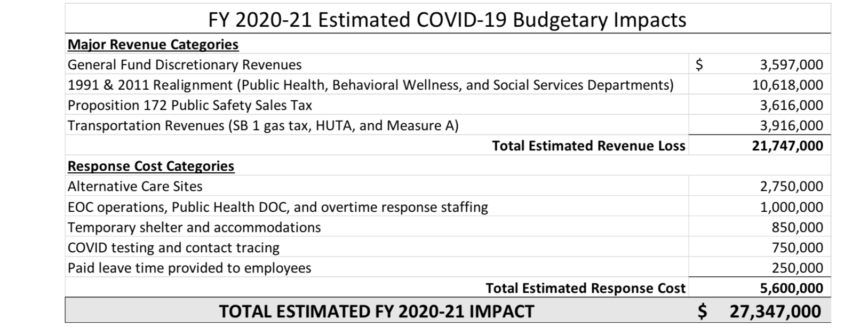Santa Barbara County creates new budget despite many COVID-19 financial impacts



SANTA BARBARA, Calif. -- With the economy taking a dive in the last two months due to COVID-19, Santa Barbara County is trying to figure out a good calculation on their budget before the deadline set at the end of this month.
The final work is taking place with the best guess as to the impacts from the coronavirus on taxes, jobs and the overall healthcare demands that come with the pandemic.
Like all U.S. governments, the pandemic shut-down has blindsided them near the time when they were planning for the next fiscal year.
Pie charts, and bar graphs all show a deep decline in income from the loss of tourist dollars and sales taxes during the Spring months. There is an uncertain projection of a modest return to normal in the months ahead. A full recovery is expected to take at least two years.
The recommended budget is balanced at $1.19 billion.
The County has a staff level of 4,304 full time employees, which is larger than last year by 1.12 percent.
A County report says the recommended budget provides a preliminary estimate of the money expected in from a variety of funding sources, until more is known when the State budget is adopted.
It is expected that the budget, even after adoption, will go through several revisions as the impacts of COVID-19 play out. That means an ongoing long range planning for different scenarios to get ahead of any further financial challenges including the chance that the economy doesn't rebound well, or if there is a "second wave" of the virus.
The County is striving to maintain current service levels.
One of the solutions that some counties will not be able to draw upon is, the newer cannabis tax which could be about $3 million for Santa Barbara County.
The County is developing a contingency plan should COVID-19 impacts and a recession trigger mid-year budget actions.
The total revenue losses for the coming year are estimated at $21.7 million.
"We are in a recession and the shut down has caused stress to our families and communities," said Santa Barbara County CEO Mona Miyasato. "There is light at the end of the tunnel."
A question that is still unanswered, "For how long will this last and what is the real impact on our economy? There's a lot of uncertainty in this phase of transition, so the best we can do is prepare, be cautious and depend on each other."
Many financial questions may not be answered this year. If some of the financial support is coming from the federal government, that budget is not done until later this year, leaving a time gap the county would rather not have as it plans.
A concern is a prolonged COVID-19 crisis with health and economic impacts until a vaccine is developed, and Miyasato said that would have a "devastating impact on the state. "
The state budget relies on more government funding from the federal government and that is still highly debated in Washington, D.C.
A strong commitment is being made to "do no further harm to the most vulnerable in the community," said Miyasato.
In a budget analysis Jeff Frapwell, Assistant County Executive Officer, said there will be a five year budget forecast presented in November and changes to the current budget may be made at that time.
There are a lot of negotiations going on this week in Sacramento with state funds, and that budget should be approved on June 15.
"It will take awhile, even if they approve a budget on time, what impact that will have on the County's budget," said Frapwell.
There was also a call to take a look at Sheriff's department services and the demographics of the jail population. A call out was made to have the justice system move faster.
"Even though it is normal for many jails across the state to have 70 percent of its population awaiting trials," said Supervisor Das Williams, "It is a waste of money because a certain percentage of those people will be found innocent."
He also suggested more community based patrols.
Supervisor Steve Lavagnino was cautious about pulling back too far. "There are a lot of people out there that count on us to protect them," he said.
Sheriff Bill Brown was also praised for providing services for homeless people in jail to prevent a recurring cycle of going in and out of incarceration.
Supervisor Peter Adam said there are a lot of people who don't agree that, "just because a certain demographic is in jail, then the system is racist."
The new North County jail in Santa Maria will come with a budgeted expectation of about $20 million in annual costs.
"COVID-19 has been a grand experiment where we have released 300 people into the community and monitored them," said Supervisor Gregg Hart about the jail release program recently. "From where I sit, that worked."
"The community is loudly saying "We want innovation" in law enforcement," said Hart. "We can not do business as we have going forward, our community is demanding a different response and the events that have transpired that have provided us the opportunity by reducing the jail population need to be extended and continued aggressively. "
